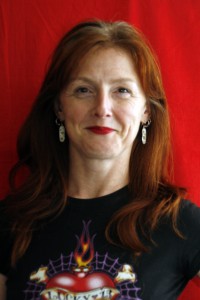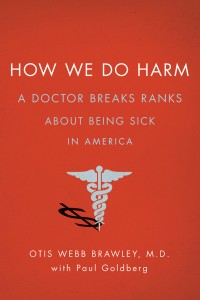 By Angela Wall, PhD., BCAction Communications Manager
By Angela Wall, PhD., BCAction Communications Manager
How We Do Harm: A Doctor Breaks Ranks About Being Sick in America by Otis Webb Brawley, M.D., with Paul Goldberg.
There’s a lot to like about this book: it’s an easy-to-read chronicle of Dr. Otis Brawley’s life as a practicing oncologist at Grady Memorial Hospital in Atlanta, Georgia, and researcher for the National Cancer Institute. Brawley offers a pull-out-the-stops critique of cancer care over the years in the United States. He’s critical of the pervasive culture of over-everything in the current health care system: overdiagnosis, overtreatment, overscreening, overcompensation to doctors by pharma and device manufacturers, and the cultivation of overoptimism and faith among cancer patients that oncologists actually have their best interests at heart or, worse, are up to date with the most recent and current treatment literature. I loved all this whistleblowing. We need more truth telling.
And I appreciated Brawley’s efforts to address the workings of the “cancer industry” and the ways in which it fails patients. This, to me, is the real strength of the book. Brawley writes frankly: “I empathize with a patient who views an unproven procedure as her only hope for living longer, but I have nothing but contempt for a medical practitioner who labels bullshit “hope” and profits handsomely from it. It’s possible to have innovation and quality and access and lower costs. There is no need to choose” (24). If he added “less toxic” to his list, his views would have a perfect match with BCAction’s position on approval of new cancer drugs.
 Brawley touches somewhat on health inequities in the US, and I wish he explored it more. Here at BCAction we know that health inequities aren’t just about access to healthcare. Inequities in breast cancer incidence and outcomes are based on a complex interplay of social factors, including where we live, learn, work, and play. These factors embody the realities that explain higher cancer mortality rates for people in underserved communities. For Brawley, while “skin color, wealth, education, area of geographic origin, and family history are important” in any effort to understand health disparities, he argues that “we could improve dismal health outcomes on both ends of the socioeconomic spectrum if we were simply faithful to science, if we provided and practiced care that we knew to be effective” (12). Science alone won’t do it. We need science, but we also need justice — economic, social, racial, and environmental justice.
Brawley touches somewhat on health inequities in the US, and I wish he explored it more. Here at BCAction we know that health inequities aren’t just about access to healthcare. Inequities in breast cancer incidence and outcomes are based on a complex interplay of social factors, including where we live, learn, work, and play. These factors embody the realities that explain higher cancer mortality rates for people in underserved communities. For Brawley, while “skin color, wealth, education, area of geographic origin, and family history are important” in any effort to understand health disparities, he argues that “we could improve dismal health outcomes on both ends of the socioeconomic spectrum if we were simply faithful to science, if we provided and practiced care that we knew to be effective” (12). Science alone won’t do it. We need science, but we also need justice — economic, social, racial, and environmental justice.
Research data from studies that fail to include women and men from underserved communities or communities of color leads to science that doesn’t reflect the specific pathology and lived experiences of a disease as it impacts communities. Staying faithful to science doesn’t always improve the situation unless we are cognizant of whose cancers get studied and in relation to what causal factors. Adhering to science doesn’t help if we don’t understand the practical barriers to health maintenance in underserved communities.
The entire U.S. medical system is built around an economy motivated and driven by profits at great cost to patients. Brawley’s book is a collection of ‘buyer beware’ stories. The book is worth the read for a solid dose of why we need independent research, why we need to shift the balance of power at the FDA away from big pharma toward patients, why we need a precautionary approach to environmental health, and why we must address and end health inequities. Too many lives are devastated by cancer. And between this book and films like Pink Ribbons Inc., people can no longer claim ignorance. The truth is coming